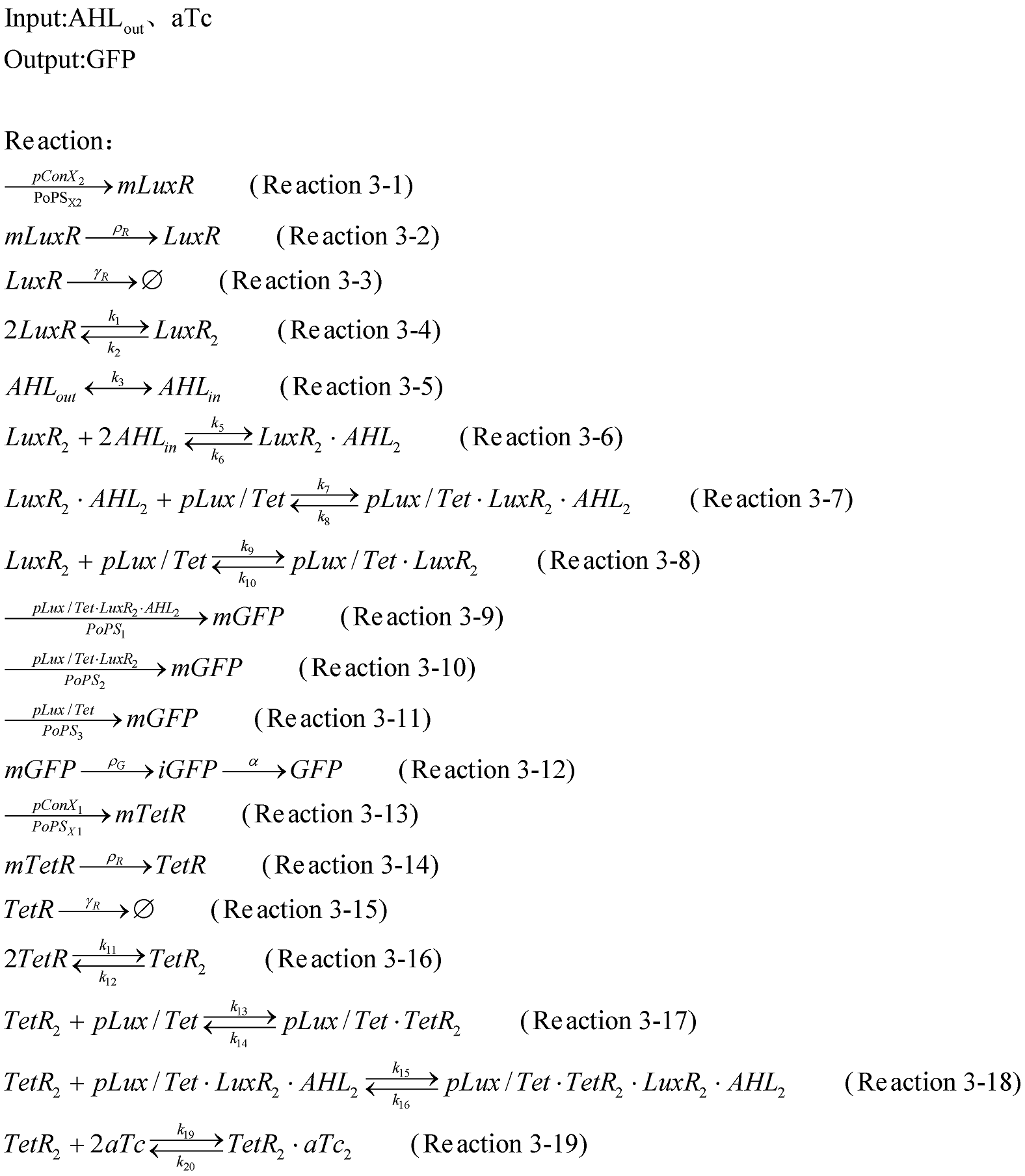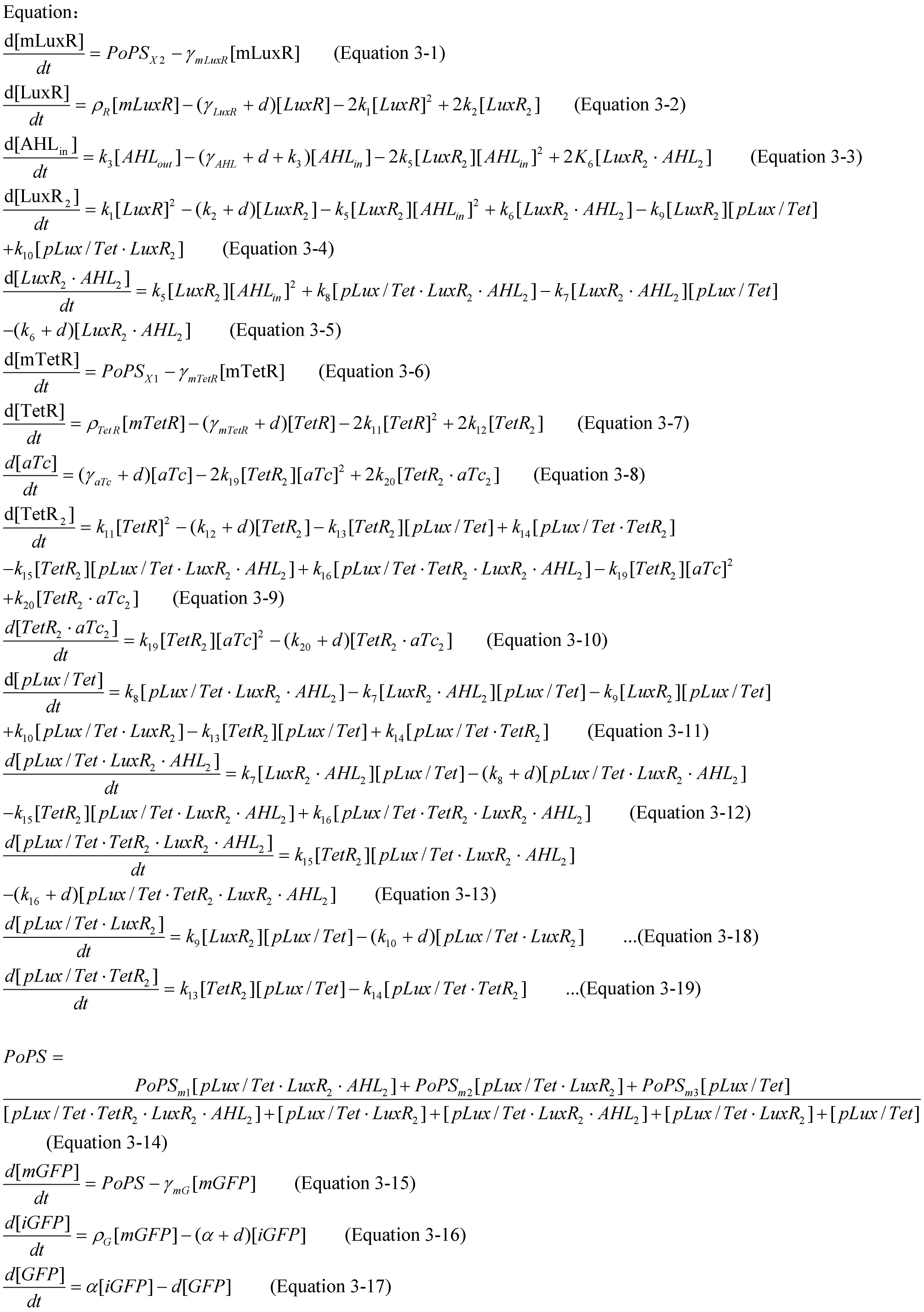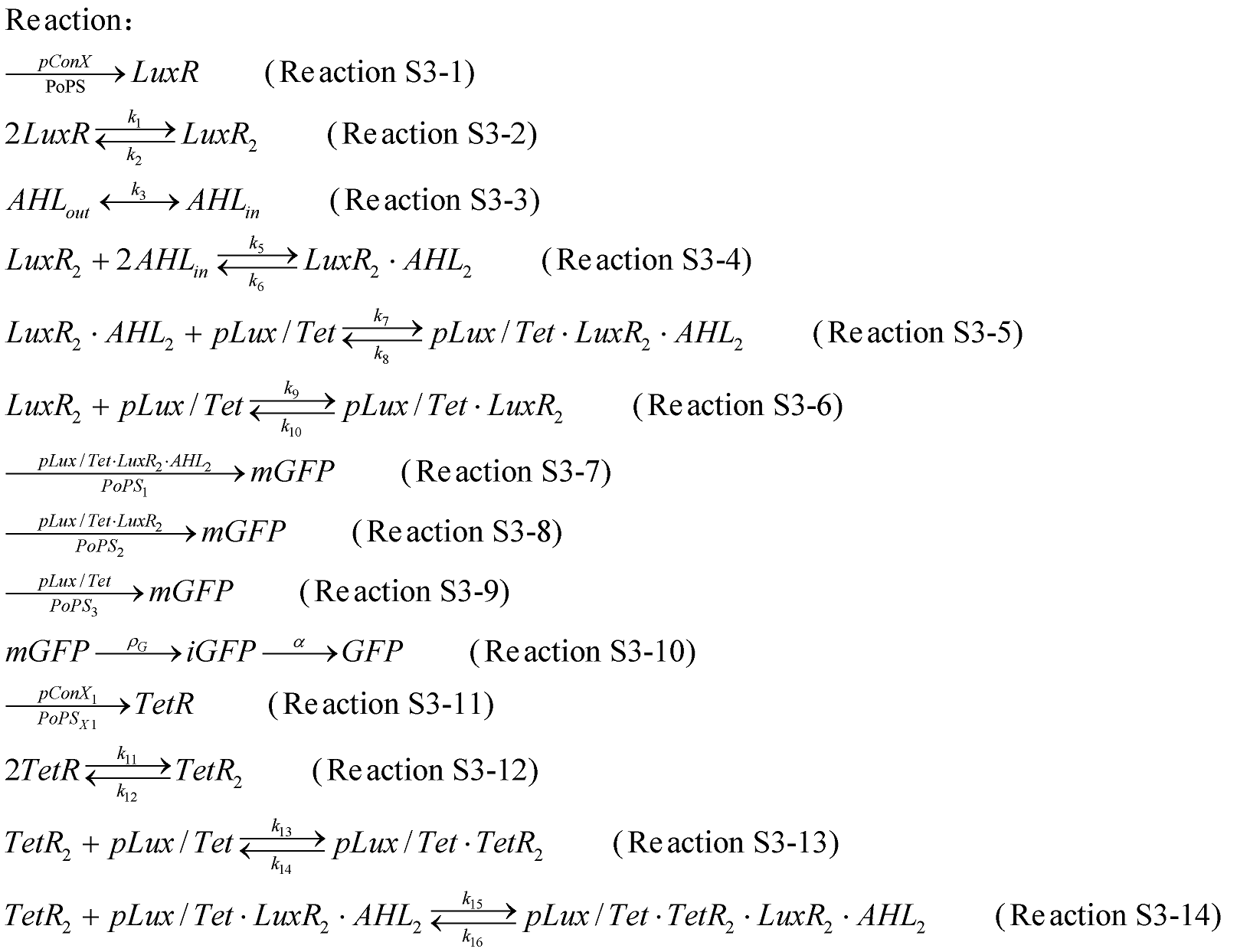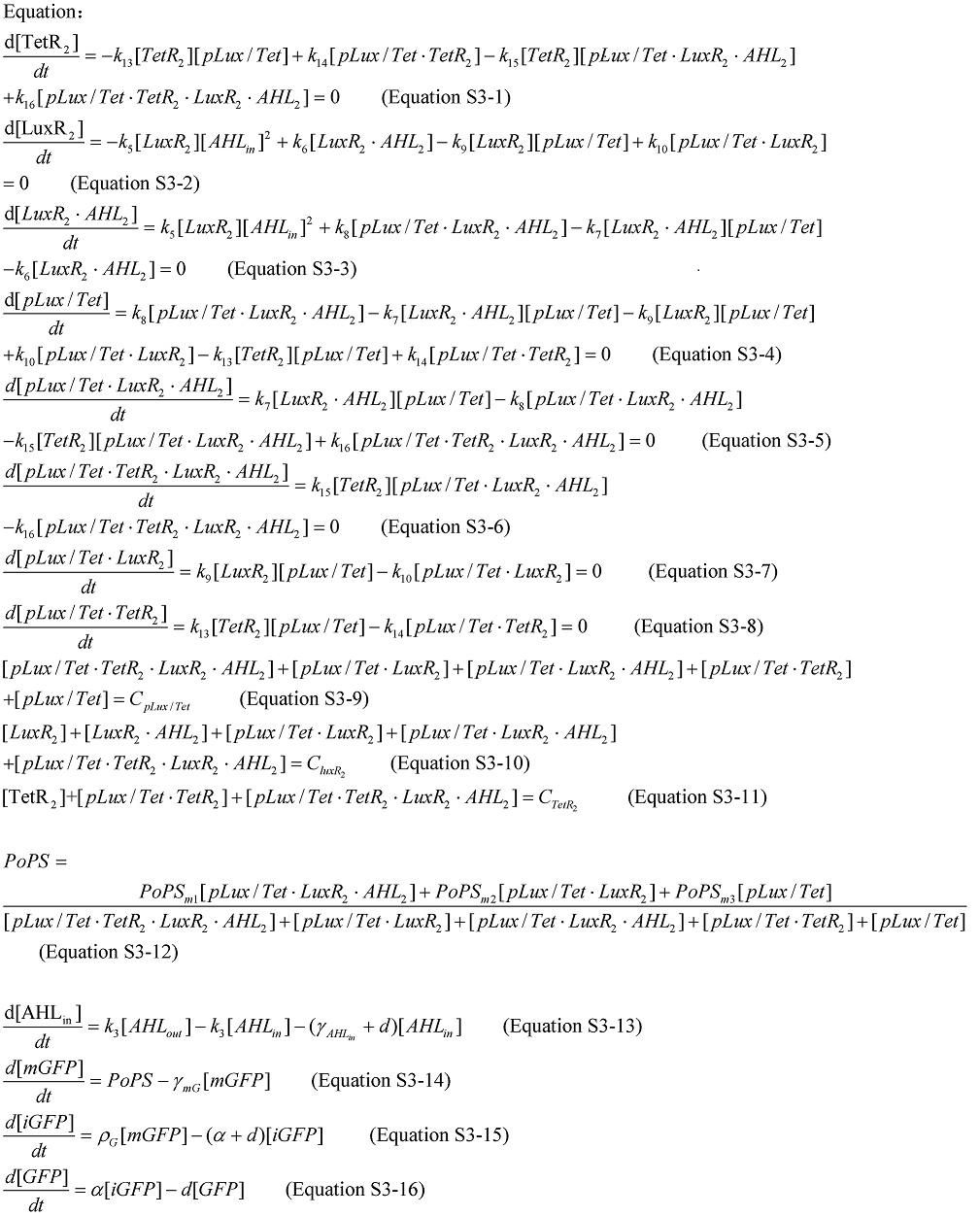Team:USTC/Modeling/Model-3
From 2009.igem.org
(Difference between revisions)
| (7 intermediate revisions not shown) | |||
| Line 13: | Line 13: | ||
== '''Simplified Model-3''' == | == '''Simplified Model-3''' == | ||
| - | + | To get the datails of the model-processing, click [[Team:USTC/Modeling/Model-2|'''Simplified Model-2]] | |
We employed an ODE model. We defined the input to be AHL<sub>out</sub> the and the output to be the synthesis rate of mature GFP. | We employed an ODE model. We defined the input to be AHL<sub>out</sub> the and the output to be the synthesis rate of mature GFP. | ||
| - | [[Image:s-m- | + | [[Image:s-m-3-1.jpg|700px]] |
| - | To simplify the model, the (Recation | + | To simplify the model, the (Recation S3-3), (Recation S3-4), (Recation S3-5),(Recation S3-13) and (Recation S3-14) were considered to be able to get balance in a very shortly time. |
| - | |||
| - | [[Image:s-m- | + | [[Image:s-m-3-3.jpg|800px]] |
| + | |||
| + | Conbining the data from our measurements and the parameters estimated in [[Team:USTC/Modeling/Model-2|'''Simplified Model-2''']], we could be able to get the parameter kkk, k<sub>11</sub>, k<sub>12</sub>, k<sub>13</sub>, k<sub>14</sub>, k<sub>15</sub>, k<sub>16</sub>. | ||
Latest revision as of 03:49, 22 October 2009
| Home | Team | Project | Modeling | Parts | Standard & Protocol | Software Tool | Human Practice | Notebook |
|---|
Team:USTC/Modeling/Model-3
Contents |
pConX1+tetR+pConX2+LuxR+pLux/Tet+GFP
Parts:
Simplified Model-3
To get the datails of the model-processing, click Simplified Model-2
We employed an ODE model. We defined the input to be AHLout the and the output to be the synthesis rate of mature GFP.
To simplify the model, the (Recation S3-3), (Recation S3-4), (Recation S3-5),(Recation S3-13) and (Recation S3-14) were considered to be able to get balance in a very shortly time.
Conbining the data from our measurements and the parameters estimated in Simplified Model-2, we could be able to get the parameter kkk, k11, k12, k13, k14, k15, k16.
 "
"




